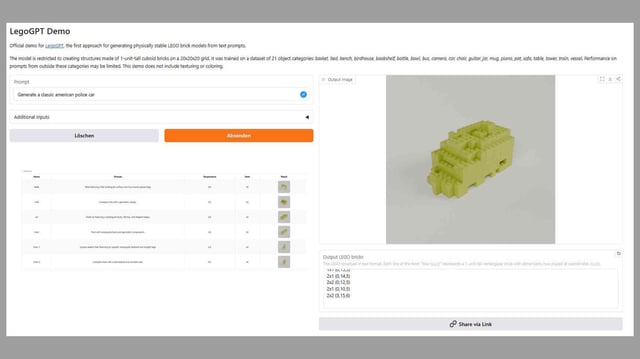Overview
- LegoGPT, developed by Carnegie Mellon researchers, converts natural-language prompts into detailed Lego build instructions while ensuring structural stability.
- The AI system was trained on over 47,000 Lego structures across 21 object categories, leveraging Meta’s Llama 3.2 and OpenAI’s GPT-4o models.
- LegoGPT’s code and dataset, named StableText2Lego, are publicly available on GitHub, with a demo supporting single-color, 20×20×20 rectangular-brick models.
- The demo also allows integration with computer vision models to suggest builds based on users' existing bricks, though this feature is still experimental.
- Future updates plan to expand the system's capabilities to include additional brick shapes, colors, and textures for more complex designs.



